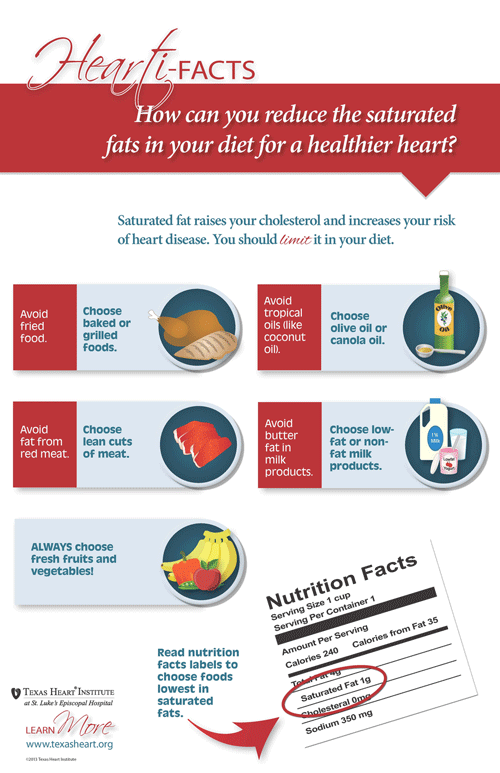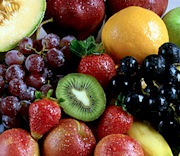
-
Eat more fruits and vegetables.
-
Eat more fish and chicken. Substitute ground turkey or chicken for ground beef. Remove the skin from chicken before cooking.
-
Eat leaner cuts of beef and pork, and trim as much visible fat as possible before cooking.
-
Bake, broil, or grill meats; avoid frying. Avoid breaded meats and vegetables.
-
Use fat-free or reduced-fat milk instead of whole milk. Instead of sour cream, try nonfat plain yogurt or a blend of yogurt and low-fat cottage cheese. Use low-fat cheeses.
-
In recipes, use two egg whites instead of one whole egg.
-
Avoid cream and cheese sauces, or make recipes with low-fat milk and cheese.
-
Instead of chips, snack on pretzels or unbuttered popcorn.
-
Limit hydrogenated fats (shortening, lard) and animal fats (butter, cream) if you can. Use liquid oils, particularly canola, olive, safflower, or sunflower.
-
Read the nutrition labels on all products. Many "fat-free" products are very high in carbohydrates, which can raise your triglyceride levels.
-
Compare the fat content of similar products. Do not be misled by terms like "light" and "lite."
-
When eating in a restaurant, ask that the sauces and dressings be served on the side.
-
Look for hidden fat. For example, refried beans may contain lard, or breakfast cereals may have significant amounts of fat.
-
Try cooking with herbs, spices, lemon juice, etc., instead of butter or margarine.
See on other web sites:
 American Heart Association
American Heart Association
www.heart.org/HEARTORG/GettingHealthy/FatsAndOils/
Fats101/Fats-101_UCM_304494_Article.jsp
Fats 101
Updated August 2016



